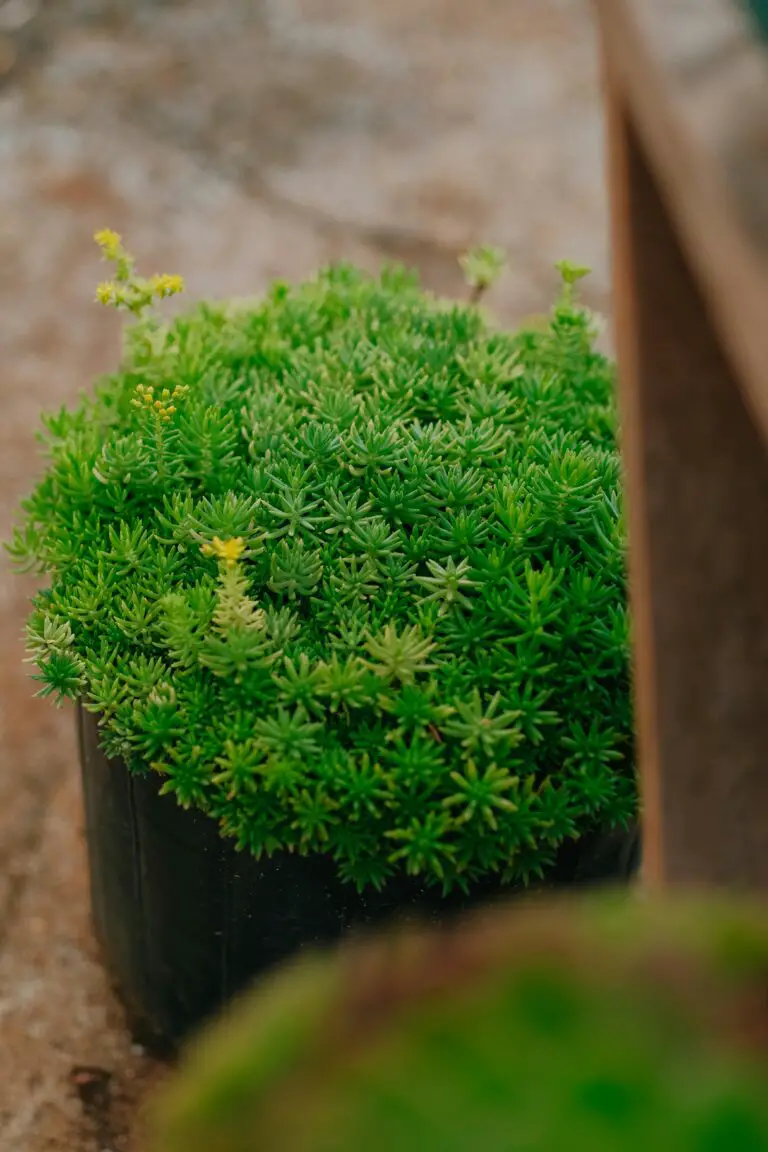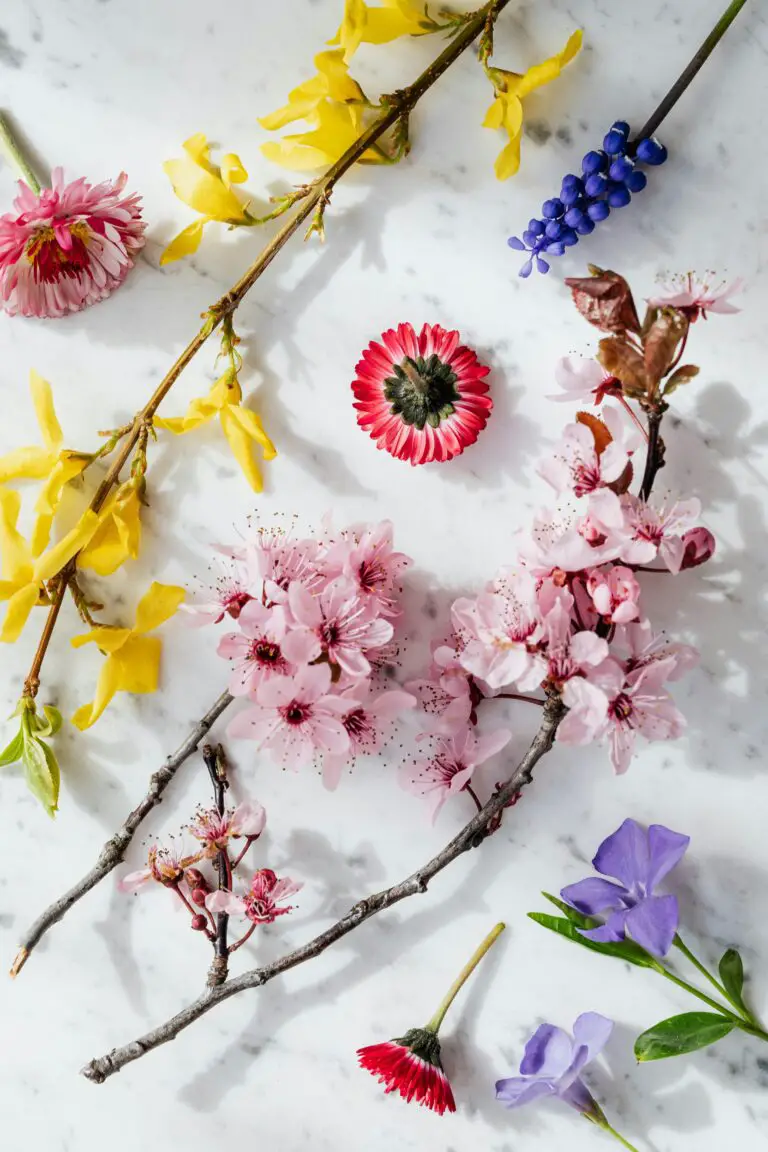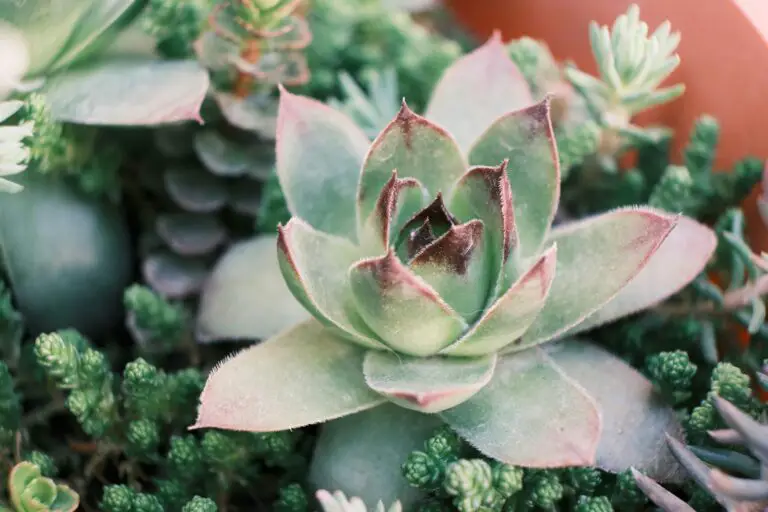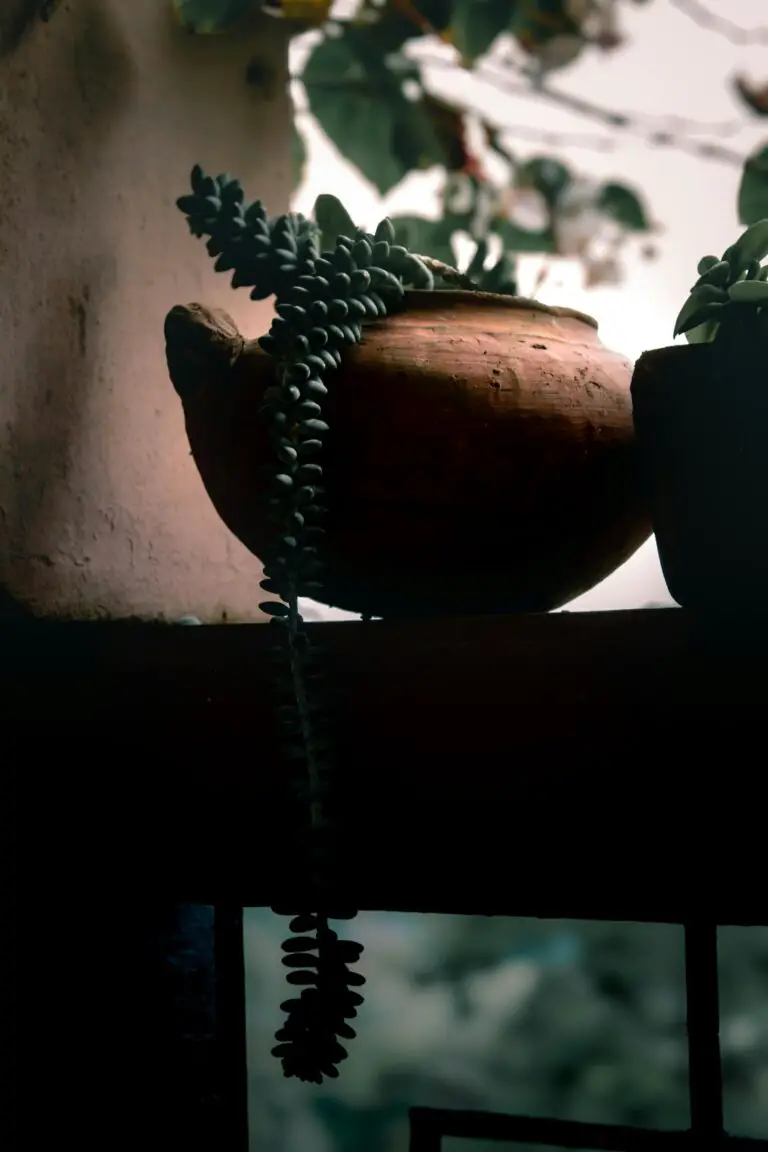Introduction to Sedum
Picture this: a plant so resilient, it weathers both blazing summers and frigid winters with the same tenacious vigor – meet sedum, the chameleon of the plant world. If you haven’t heard of sedum, you’re in for a treat. This succulent embraces a myriad of forms and colors, adapting to rock gardens, green roofs, and even the apothecary’s shelf.
But why are gardeners, landscape geniuses, and herbalists so smitten with these hardy perennials? Clue’s in their versatile nature. These plants aren’t just a pretty face; they’re workhorses, tirelessly preventing soil erosion, gracing us with year-round foliage, and calling in the pollinators with their nectar-rich blooms.
From the rolling hills of Europe and Asia, where they grew wild and free, to the curated corners of modern gardens, sedum plants, also known as stonecrop, have spread their roots far and wide. Their knack for survival isn’t just impressive – it’s inspirational. Let’s dive into the world of sedum and uncover the secrets that make them the darlings of the plant kingdom.

In the concrete jungle, these succulents are the unsung heroes, popping up between pavements, softening the urban sprawl with their easy-going charm. They ask for little – a bit of sunshine, a whisper of water – and yet they give so much, transforming barren terrains into tapestries of life. If you thought all succulents did was look cute on your desk, think again. Sedum stands as a testament to nature’s adaptability and serves as a green oasis in life’s desert.
Sedum in the Garden: Aesthetic and Practical Benefits
Let’s usher in a vibrant tapestry of color and texture to your garden tableau with sedum, a succulent with a masterful mix of ornamental allure and hassle-free upkeep. Imagine a plant that paints your outdoor space with lush greens, fiery reds, and sunny yellows without demanding constant care or a green thumb! Sedum flaunts its versatility not only by bedazzling the sight but by also inviting a symphony of life as bees and butterflies flit from bloom to bloom.
Simplicity reigns in sedum care, making it a go-to choice for both novice and seasoned gardeners. Picture a plant that thrives despite neglect, steadfast through scorching sun and biting cold. This stoic survivor enhances garden resilience, shouldering extreme weather without breaking a sweat—or rather, a leaf.
Ready to know more about the sedum’s robust character? This botanical powerhouse stands unbothered by pesky pests, in silent rebellion against the typical gardener’s plight—offering a much-needed respite from the toil of dealing with unwanted invaders.
Dig deeper into the world of sedums and you’ll uncover a secret: their contribution to biodiversity is unparalleled. They’re not merely fixtures of beauty but guardians of the ecosystem, bolstering the local habitat with renewed vitality. For insights on seamlessly blending such resilient beauty into your home environment, explore the interior sensation of the sedum palmeri’s care and styling.
Need a visual? Feast your eyes on this garden enthusiast’s guide to planting and relishing the robust character of sedum:
Revel in the sight of sedum’s transformative power within the garden’s embrace. Succumb to sedum and let your garden radiate life’s perennial flow!
Sedum and Eco-conscious Landscaping
In the world of eco-friendly design, sedum takes the stage as a superstar of sustainable landscaping. With its ability to thrive in less than ideal conditions, sedum sets the bar for low-maintenance and resilience. But it’s not just the plant’s hardiness that makes it a top choice for green initiatives; it’s how sedum transforms spaces into verdant havens that has everyone talking.
Imagine a concrete jungle, now picture it interspersed with verdant rooftop gardens that not only beautify the urban sprawl but also combat heat islands and improve air quality. This isn’t just a dream; it’s a reality where sedum plays a leading role. Green roofs are flat or sloping rooftops covered with soil and vegetation, which often feature layers of sedum varieties. These high-flying gardens act as natural insulators, reducing energy costs, and minimizing stormwater runoff, a true testament to an architecture that’s not only functional but sustainable.
But it doesn’t end there. Vertical gardens are climbing their way into the spotlight, and sedum is front and center. These living walls, decked with cascading curtains of sedum, aren’t merely aesthetic masterpieces; they’re a breath of fresh air. Literally. They filter pollutants and CO2, contributing to a cleaner environment while ushering in a touch of nature into the urban environment.
Taking eco-conscious landscaping to the next level, sedum is a key player in sustainable urban planning. Its versatility as ground cover means it can be used in parks, gardens, and anywhere the ground demands a durable carpet of color that withstands trampling better than grass. What’s more, they require minimal watering and upkeep, making them a go-to solution for spaces that aim to be ‘green’ in more ways than one.
Real-life examples abound as cities around the globe embrace sedum in their sustainability efforts. From the High Line in New York to the Acros Fukuoka Prefecture International Hall in Japan, these spaces showcase how integrating nature into building design is not just a luxury but a necessity for future urban planning.
Water Wisdom: Sedum’s Drought Resistance
In an era where every drop counts, sedum emerges as the plant hero in water-wise gardens across the globe. So, let’s dive into the drought-defying world of sedum and discover how this succulent savant is redefining resilience in arid and semi-arid regions.
Imagine this: Blazing sun, baking soil, and scarce rainfall. It seems like no plant should survive here, right? But then you spot a sedum, thriving and unruffled by the water shortage, its plump leaves a testament to its drought tolerance. These hardy plants have mastered the art of water storage, their succulent leaves acting like miniature reservoirs, ensuring they have access to life-giving moisture even when the skies withhold their rains.
Not only do they boast a remarkable ability to hoard water, but sedum plants also feature deep root systems which stretch far and wide, scavenging every bit of moisture they can find. This makes them an ace up the sleeve for any garden confronted with water scarcity. Their low water needs and ability to maintain lushness without the lavish hydration that other plants demand make them a popular choice in sustainable landscaping.
But to truly grasp the marvel of sedum’s water wisdom, let’s zoom in on a real-life vignette: urban rooftops. Here sedum stars in green roofs, where its drought resistance is not just beneficial but essential. These elevated oases can face harsh conditions, and yet sedum thrives, reducing runoff, insulating buildings, and creating islands of green in a concrete sea—no frequent watering required!
So, whether they are softening the edges of a sun-baked path, carpeting a green roof, or dotting a rock garden, sedums stand as nature’s water economists. As gardeners, by choosing sedum, we’re not simply planting a succulent; we’re investing in a future where every drop of water is valued. And perhaps, these resilient beauties can teach us a thing or two about thriving in adversity—with a little adaptability and a lot of pluck.

Water Wisdom: Sedum’s Drought Resistance
When it feels like you’re gardening on Mars, with dry spells longer than a limo and a sun that’s all too generous, that’s where sedum plants shine! These rugged succulents are the unsung heroes in landscapes gasping for a sprinkle of moisture, storing H2O like a camel in their fleshy leaves, ready to outlast the driest of times.
Think about the green warriors on rooftop gardens, baking under the urban sun, laughing in the face of drought. Sedums roll out a lush carpet of drought defiance, turning these spaces into bustling eco-havens, no frequent refills needed. And here’s the kicker: they hardly ask for anything in return, making them the perfect low-maintenance allies for the water-conscious gardener.
By planting sedum, we’re not just making our gardens look snazzy; we’re casting a vote for sustainability. We’re creating pockets of green that don’t guzzle gallons, and inviting a slice of nature back into our concrete jungles, one enduring leaf at a time. This guide can help you bring these drought-defying plants into your life, ensuring you’re well-equipped to grow sedum with success.
And let’s not forget those charming little miracles where sedum quietly does its thing – like nestled in the cracks of a stone wall or spreading cheerfully across gravelly ground. They’re not just surviving; they’re thriving, setting a gold standard for resilience, and whispering a secret to the rest of the plant kingdom: “Hold your water, friends”.

Varieties of Sedum: Finding the Right Fit
Let’s wade through the verdant world of sedum, where these succulents spread their charm far and wide. Picture yourself meandering through a garden where the carpet of sedum varieties unfolds before you—each with its own story to tell. But hey, it’s not just about pretty faces; when it comes to your landscaping dreams, the right sedum can be a real game-changer!
Be it the low-growing Sedum spurium that hugs the ground like a verdant quilt or the towering Sedum telephium, with stalks that reach for the sun, there’s a sedum for every nook and cranny of your garden. Imagine a rockery adorned with Sedum reflexum, its needle-like leaves playing peekaboo among the stones, or Sedum acre spilling over the edges of a path with a nonchalant grace. Now picture the star-shaped blossoms of Sedum kamtschaticum, a plucky plant that fills your garden with a sunny disposition year after year.
So, thinking of turning your outdoor space into a sedum sanctuary? An exceptional variety that basks in a full sun bath or a shade-tolerant type that flourishes in cooler, mossy corners? Whichever sedum variety calls to you, make sure to peek at our guide on how to select the perfect plants for your landscape, considering the light, moisture, and soil conditions.
Remember, sedum isn’t just about sitting pretty. It’s about robustness, about that hardy nature that withstands droughts and shrugs off pests. It’s a survivor, adapting to an array of environments, ensuring that you spend more time enjoying your landscape and less time fretting over its upkeep.

Seeing sedum thrive in the wild gives us clues for our backyards. From rocky outcrops to alpine crevices, sedum plants weave their tapestries, a testament to their versatility. They beckon bees and butterflies, concocting a pollinator’s paradise right in your garden. So why not take a cue from nature? With a vast palette of sedum varieties to choose from, there’s no limit to the botanical masterpieces you can create!
Sedum’s Health and Medicinal Applications
Unlock the doors to ancient wisdom and explore the myriad of reported health benefits and traditional medicinal uses of sedum. This plump, jovial succulent isn’t just easy on the eyes; it holds a treasure trove of healing properties that have soothed ailments across different cultures for centuries.

Imagine a plant so versatile in its healing prowess that it found itself nestled in the pages of herbal practitioners’ logs from Europe to Asia. Known as “live forever” by the ancients, sedum was not merely a poetic moniker but a testament to its enduring use in promoting longevity and wellness. Across the continents, traditional healers have revered this robust succulent for its potential to ward off maladies and restore balance to the body.
Traditions Rooted in Healing
In the heart of the Orient, sedum was a garden staple, not only adorning rockeries but also making its way into pharmacopeias. Chinese medicine saw it as a ‘cooling’ herb, perfect for reducing inflammation and calming heated skin conditions. Its fleshy leaves, when crushed and smeared onto stubborn wounds, were said to hasten the healing process, providing relief when the body’s natural recuperation needed a nudge.
Europe’s own folk traditions weren’t far behind in discovering sedum’s virtues. From the sunny stretches of the Mediterranean to the emerald meadows of the British Isles, sedum species were harvested, dried, and brewed. Consumed as a tea, they were an old-world remedy for digestive troubles and a trusted ally against fevers and respiratory infections.
A Modern Twist on Age-Old Remedies
Fast forward to our current global village, and sedum continues to captivate those with an affinity for natural remedies. Modern-day wellness enthusiasts whisper of sedum’s potential in the realm of alternative therapies. Could it be nature’s answer to a stress-buffer or a mood-lifter? As we navigate our bustling lives, the sedative properties once cherished by our ancestors make a compelling argument for sedum’s place in our personal apothecaries.
Although diligent research is ongoing, the anecdotes and trust in sedum’s restorative abilities keep it rooted in today’s narrative of health and wellness. Whether promoting skin health or possibly playing a supporting role alongside conventional medicines, sedum retains its mystical allure. Let’s continue the exploration and celebrate the wisdom of the past as we unlock the full potential of this wonder of nature in the pursuit of health.
FAQs: Your Questions About Sedum Answered
Ever wondered what that resilient succulent in your garden bed can do other than look pretty? We’ve compiled some of the top questions about sedum to unveil the secrets behind this versatile plant. Let’s dig into the gritty details!
Can Sedum Survive in Tough Climates?
Yes, indeed! Picture this: Sedum thriving in scorching deserts and breezy highlands. Known for its hardiness, sedum makes an excellent ground cover, as it’s drought-resistant and can survive in a range of environments. A real champion of adaptability!
What Are Sedum’s Environmental Benefits?
Green roofs are all the rage, and sedum plays a starring role. With its ability to create oxygen and reduce heat, sedum on your roof isn’t just a design choice—it’s a green statement. Few plants can claim to improve air quality and fight the urban heat island effect with such style.
Are There Medicinal Uses for Sedum?
Historically, sedum has had its moment in the spotlight for various traditional remedies. Some species are said to have anti-inflammatory and astringent properties. Imagine a natural salve made from these succulent leaves soothing your skin—a testament to its hidden powers!
What Wildlife Is Attracted to Sedum?
Gardeners, rejoice! Sedum isn’t just a treat for our eyes. Bees and butterflies love it too. Think of a sedum-covered garden buzzing with life, a mini-sanctuary for pollinators. It’s a sweet deal for biodiverse ecosystems, literally.
Can I Use Sedum for Culinary Purposes?
Epicureans, take note—certain sedum species can add a fresh, peppery twist to your salads and soups. Just remember to identify the edible types before garnishing your next gourmet dish. It’s like having a secret herb garden at your fingertips!
How Does Sedum Help with Soil Erosion?
Steadfast roots and ground-hugging habits make sedum an excellent ally against soil erosion. Picture a sloping garden, once bare and prone to runoff, now held firmly in place by a tapestry of sedum. It’s nature’s own erosion control expert.

Got more questions about sedum? Keep exploring, and you’ll find that this succulent has a lot more to offer than first meets the eye. So, whether you’re a green thumb or simply sedum-curious, there’s always something new to learn about this fascinating plant.


